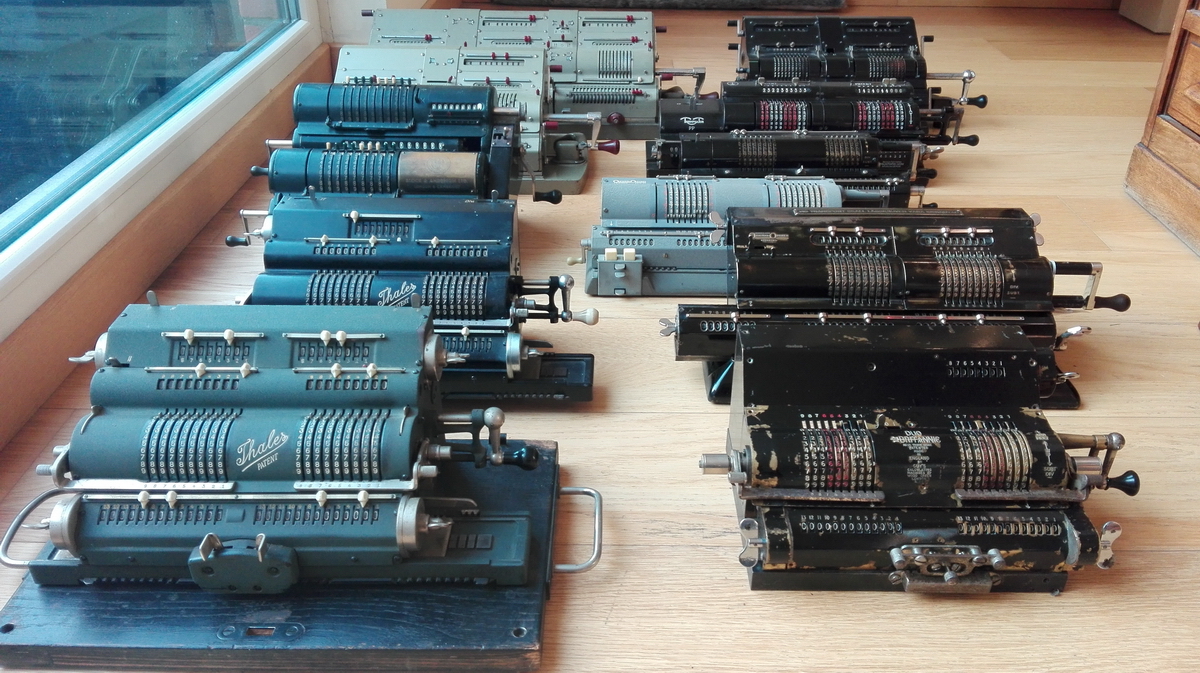Geodetic calculators
This is essentially just a "pretty pictures" page. If you want to see the explanation about coordinate calculations with geodetic double calculators, you need to go to this page. Here, I decided to assemble all the geodetic calculators in the house in front of the garden window for a group picture.Some of these are quite common. Some are rare. And some are exceedingly, exceptionally rare. The reason why I'm making the group picture now, is because one of these rare beasts is currently visiting, and the opportunity was too good to let it slide!
This is an overview picture:
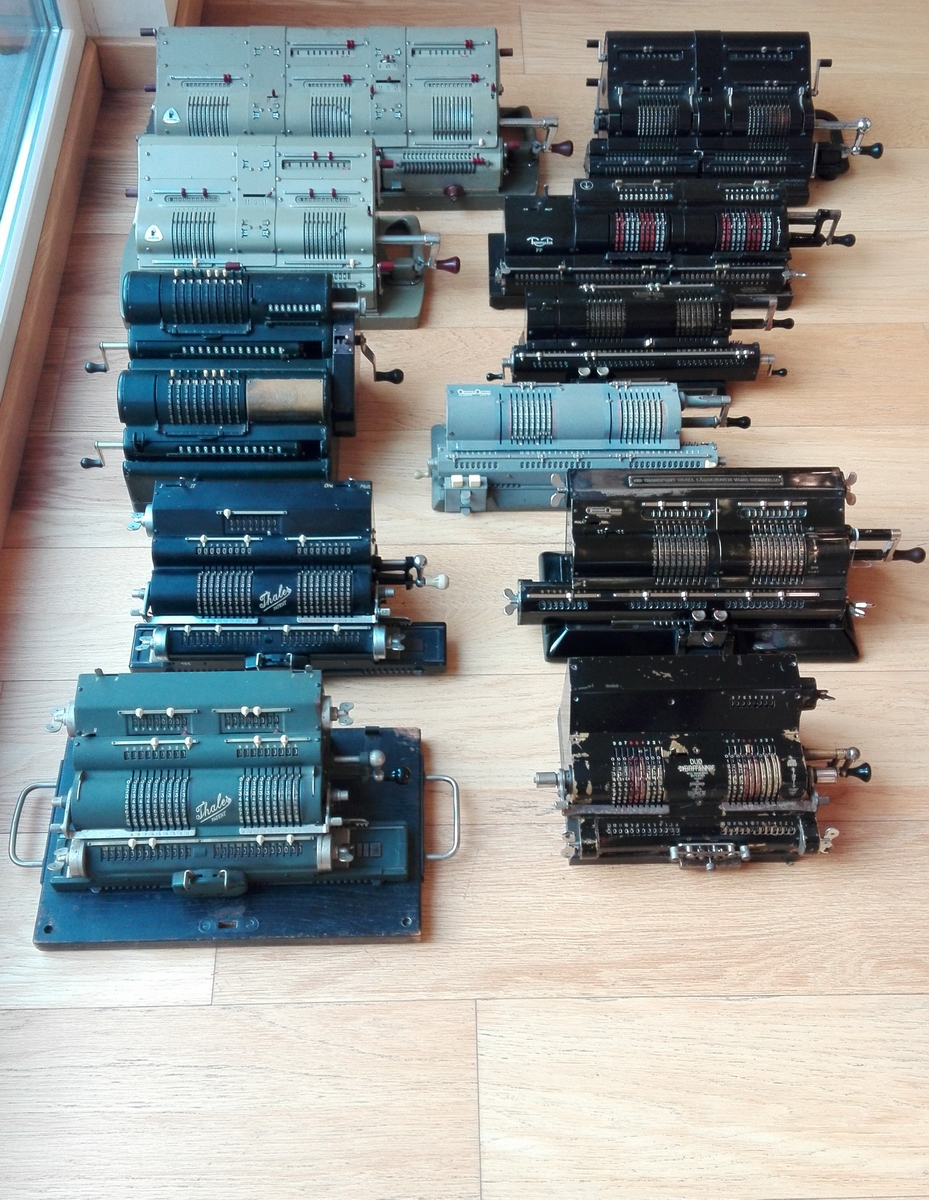
Here they are from the side:
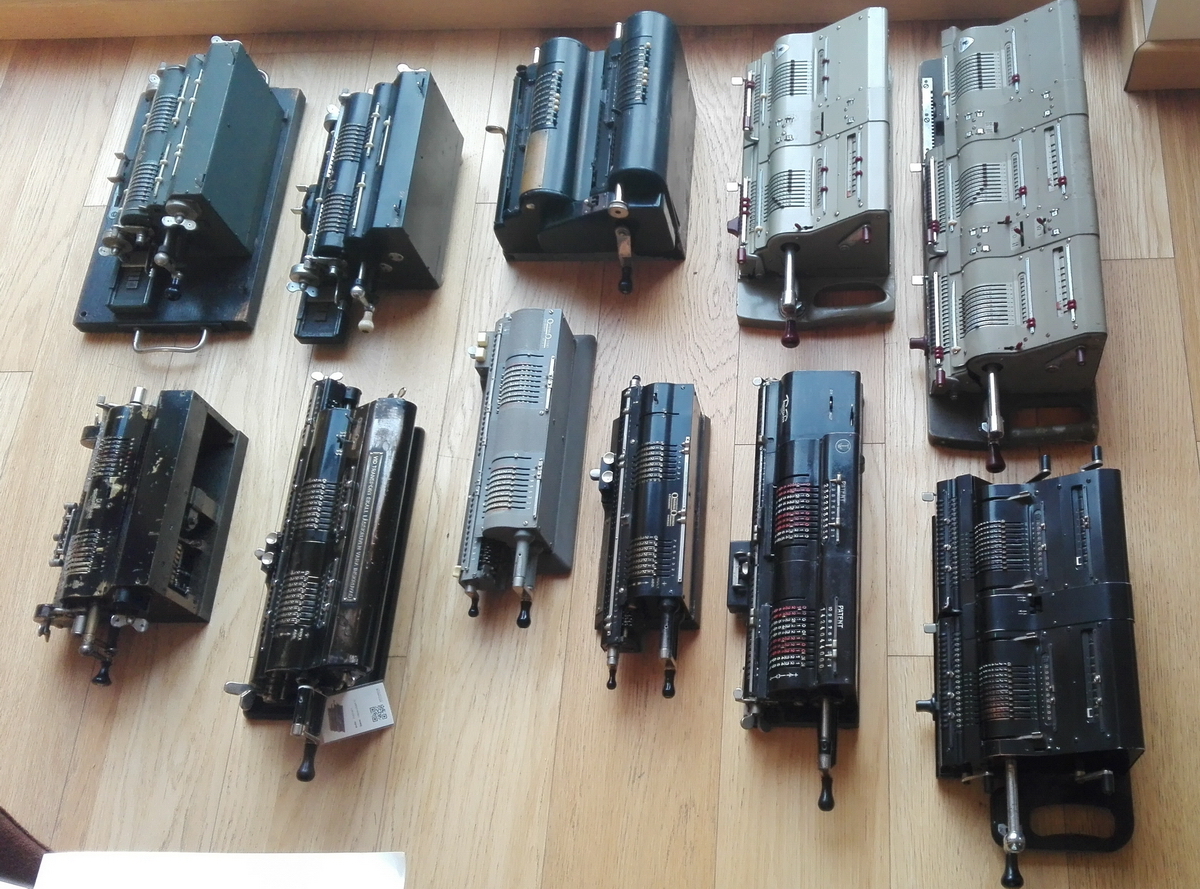
And from the back:
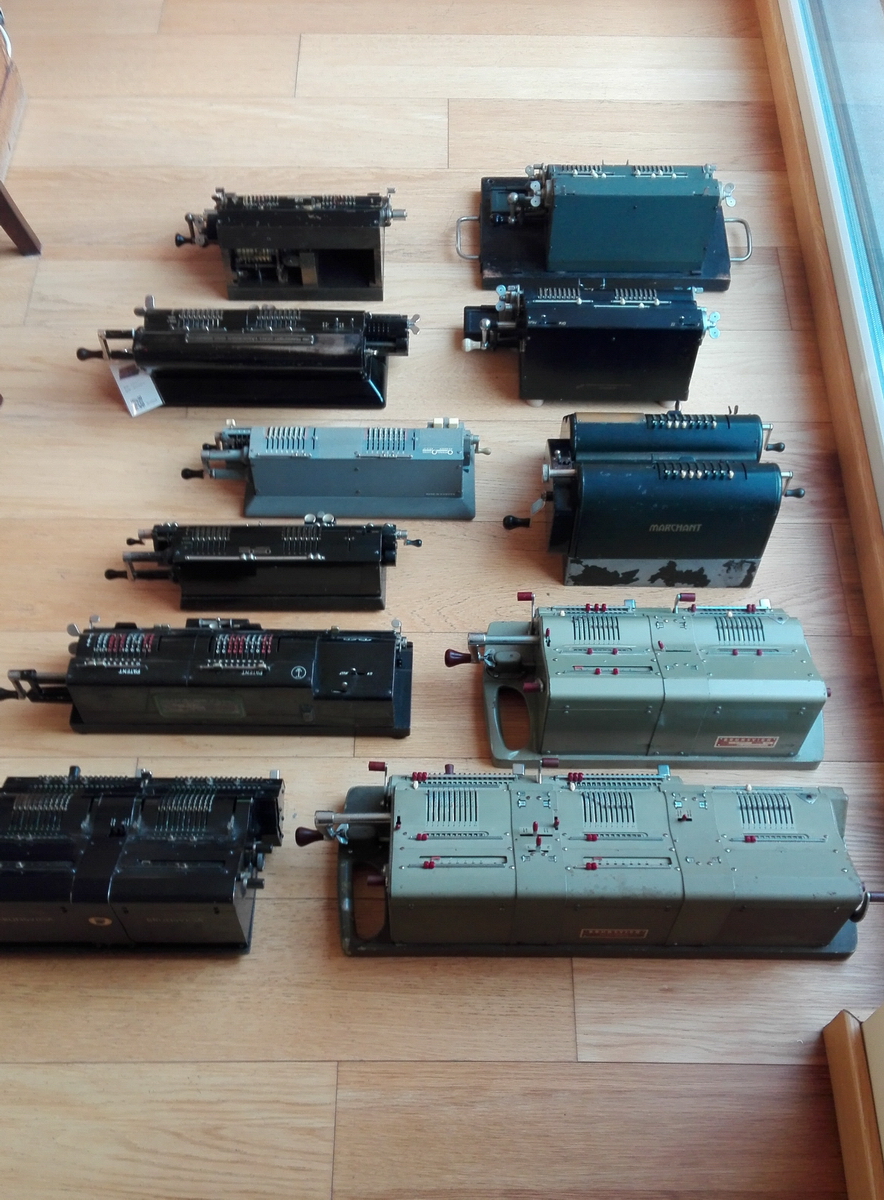
Now let's break it down into bite-sized chunks. Starting from the top, there are some machiens which are relatively common:
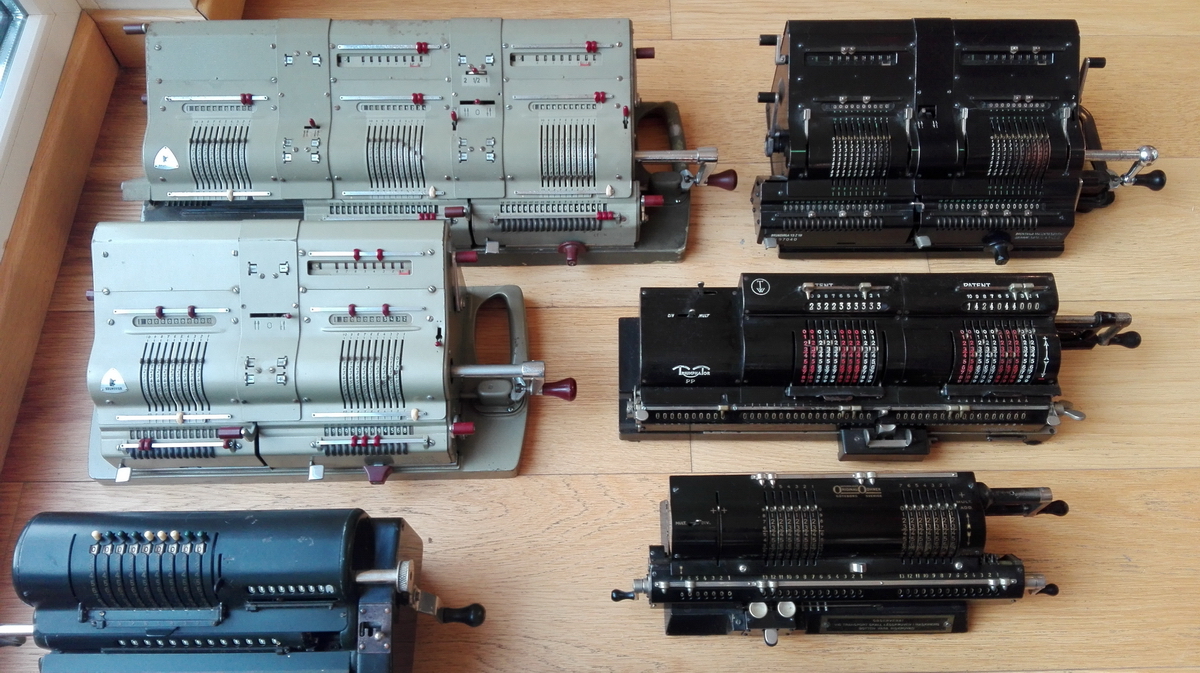
On the top and left sides are the Brunsviga machines, which definitely came out on top in the geodetic calculator market. On the top right is a Brunsviga D13Z/18 with provision for the setting of constants. The green double machine is a D13/R1, which is probably the most common geodetic machine that can be found in the market today. By 1947, over 2000 machines of the black predecessor model had been built. The triple machine, the Brunsviga B183, is a different kettle of fish - to an idea of Prof. Wittke, not so many were made, and they were bought mostly by surveyors' offices. They are decidedly hard to find today. It circumvented the patent by Thales by adding an extra machine on the left, so that results were merely exchanged, and the machine could not claim to be able to put "any result register under any input register", as patented by Thales (DE453093).
Moving away from the very common, we can look at the bottom and right of the picture. At the bottom right, we find an Odhner 35, the variant with 7 setting pins. This is based on an idea where the machines are not mechanically able to rotate in different directions, but a "complements" pin is added to the left machine, to allow to "virtually" reverse its sign. Not a great success either. They aren't exactly ubiquitous, but many were used in the Swedish army, and they do surface from time to time. Behind this machine, on the middle right, is a giant rarity. Triumphator, with its PP machine, entered the market too late, and with too little extra capabilities to corner a segment of it. The machine was a failure, and very few were made (and very few are now left). The next picture ...
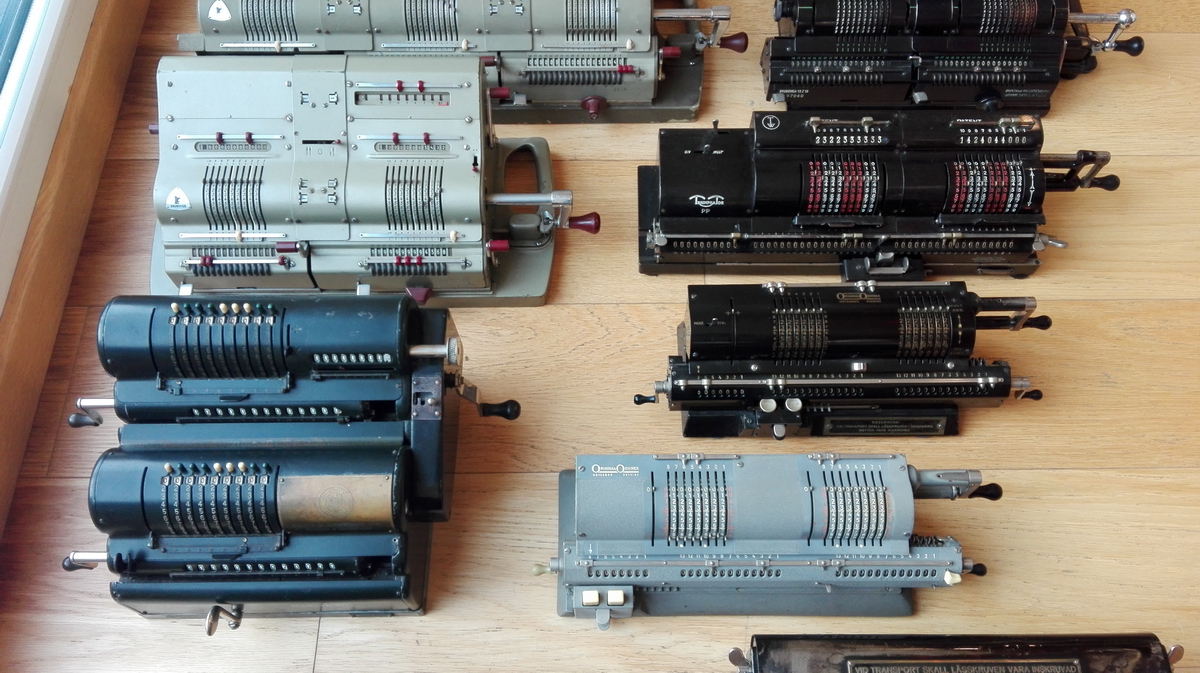
...adds the Marchant Twinplex. This machine was laboriously restored. Around 300 machines were made for the British army, and they can be found from time to time, but are usually not working, because the aluminium base distorts, putting tension on the machines, blocking them. Also at the bottom right of this picture is the new and updated variant of the Odhner 35 - the Odhner 135. This machine has the strange complements provision on both machines, so it can be called "Vorzeichentreu" - it can calculate without having to keep separate tabs on what is + and what is -. However, again, it wasn't a big success.
Moving on to the next picture:
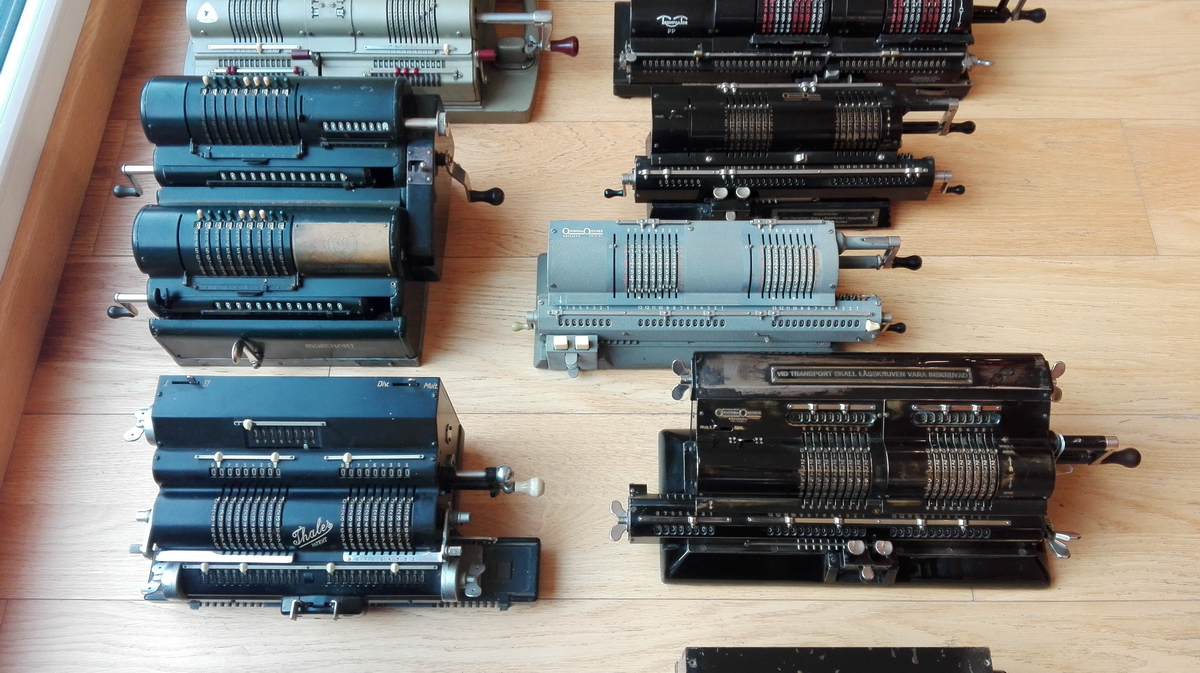
On the left is the second most common type of geodetic calculator, the Thales GEO (first type). It had some advantages that other geodetic calculators did not have, and that would save users time - especially the feature where each result register can be placed under either machine at will is very interesting. On the other hand, it lacked backtransfer, which Brunsviga wisened up to in their D13/R range, so each could claim an advantage that the other didn't have.
On the right is a very, very rare machine. Odhner decided in 1930 that they wanted to corner part of the geodetic calculator range, and this was before the "complements" period, so they decided to go all in, and pair up two of their top of the range Odhner 20s, with an added mechanism for a direction change in the left machine. The Odhner 20 has many refinements, including setting register clearing by wingnut, quick clearing for both registers, and tens' carry in the revolution counter. In addition, the carriage rolls on ball bearings, and the machine just oozes quality. I am only aware of two of these "Odhner tandem" machines, and both are in musea. Unfortunately, this is one of them, and it is the property of the Arithmeum, and just visiting my collection ... if you ever see one that I could buy, don't hesitate to let me know!
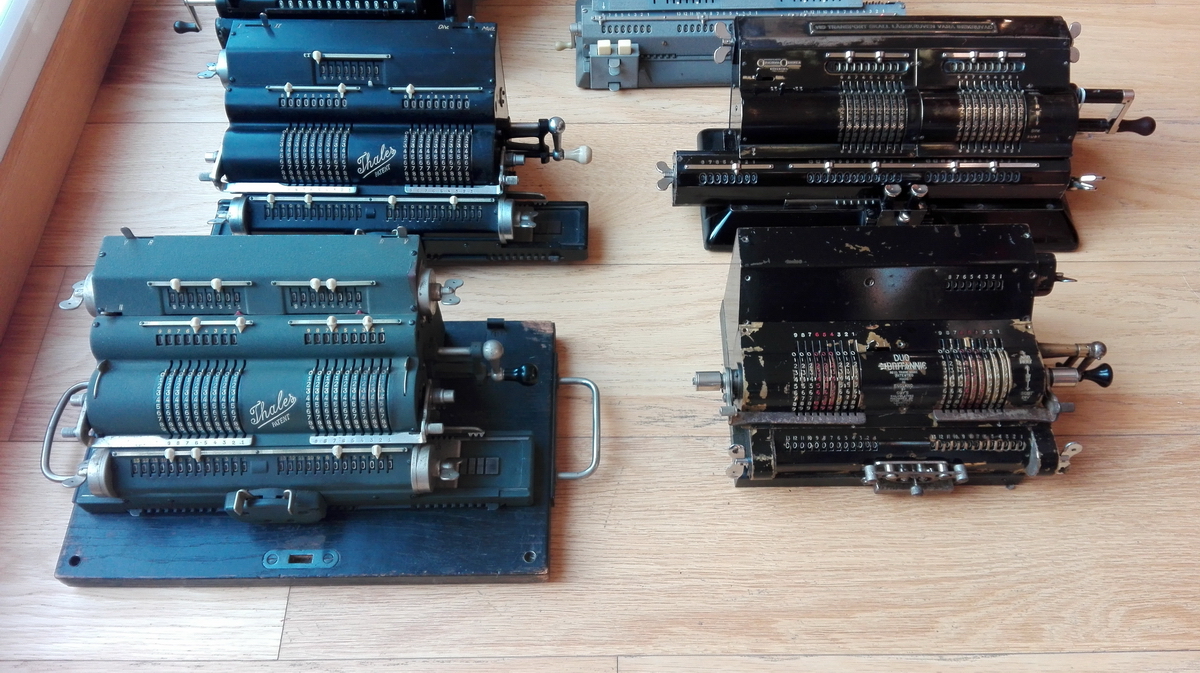
The final detail picture includes the later version of the Thales GEO, with two revolution counters, but still without back transfer, which would only be introduced with the Thales GEO/R. On the right is another giant rarity - the elusive Duo Britannic, the failed machine for the British army that was replaced by the Marchant Twinplex. Apparently the machines that were made ended up being sold to both private companies and universities. From the serial numbers, we know that probably about 80 machines were built. Obviously, there will be a dedicated page for this particular machine once the restoration is finished...
Now what's still missing? I think nearly all brands that ever built double machines are represented - apart perhaps from the Russian Felix, but I don't know if anyone has ever seen an example, and I also don't know whether these machines could actually rotate in opposite directions. An opportunity for a machine to be added would be the Odhner 35 in the slightly larger capacity of 8-input pins. Then, there are very early Brunsviga double machines from the fixed input lever range, the so called DMJR. Only 8 machines were built, one of which is in the Braunschweigisches Landesmuseum. Chances of finding another one are slim to none ... Other very early Brunsviga double calculators were in the Nova range - the D Nova II - 6 examples were built, one of which, again, is in the Braunschweigisches Landesmuseum. Triumphator also built a very early (and very large and heavy) double machine (as early as 1907!), the Duplex. How many were actually built? No idea whatsoever... I've never seen one.
This probably means that, once the Odhner tandem has returned to the Arithmeum, you're unlikely to find a better group of geodetic calculators than this one all together in one picture!
To end with, a picture from the front of the group:
